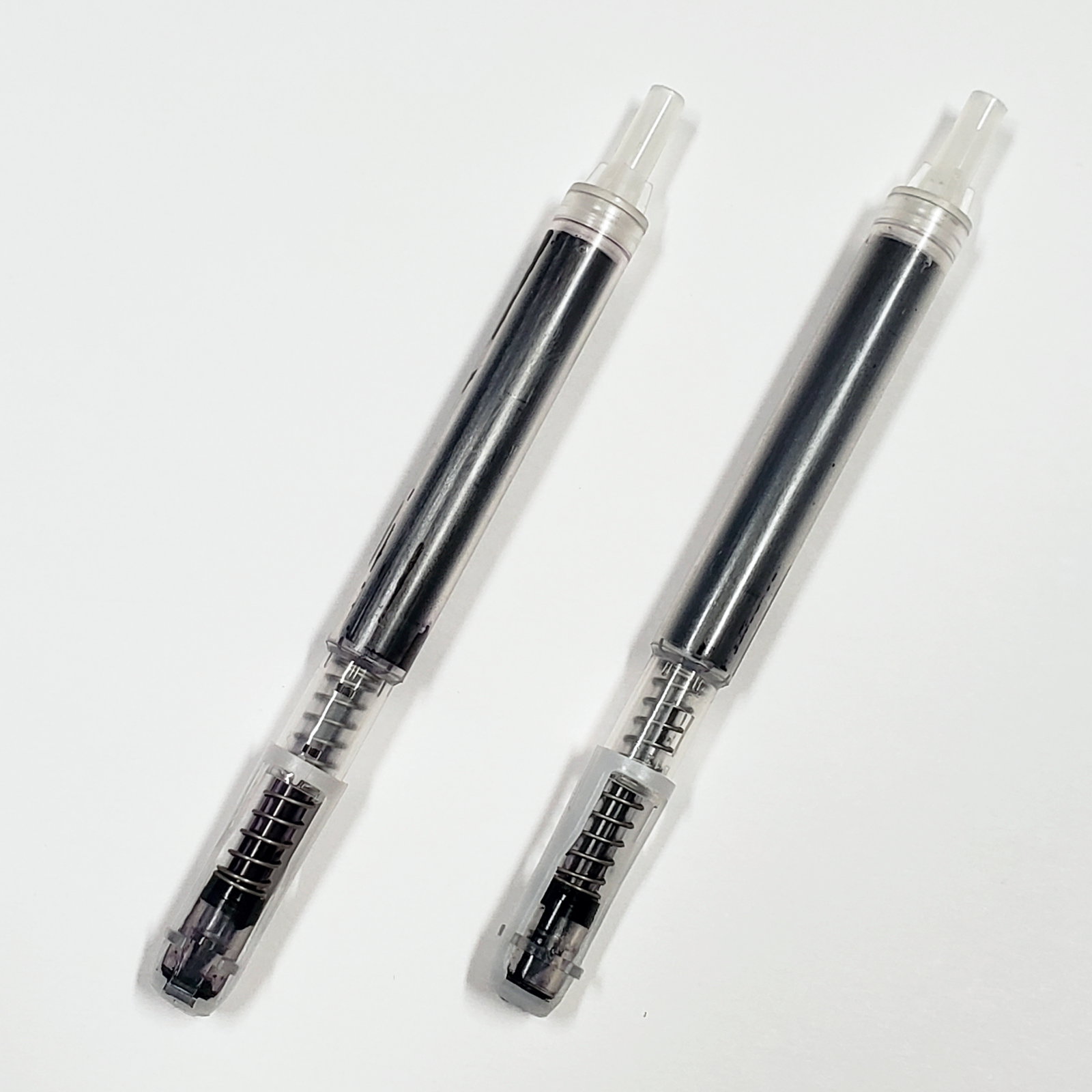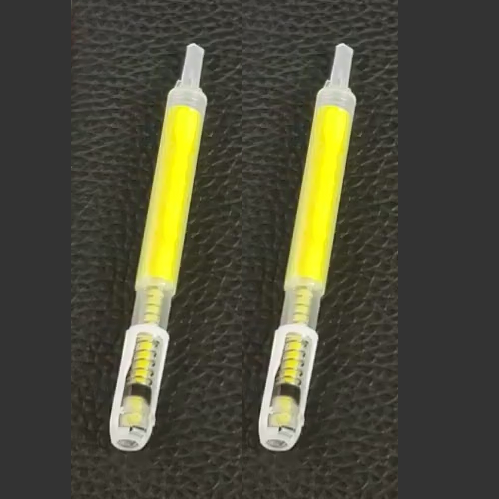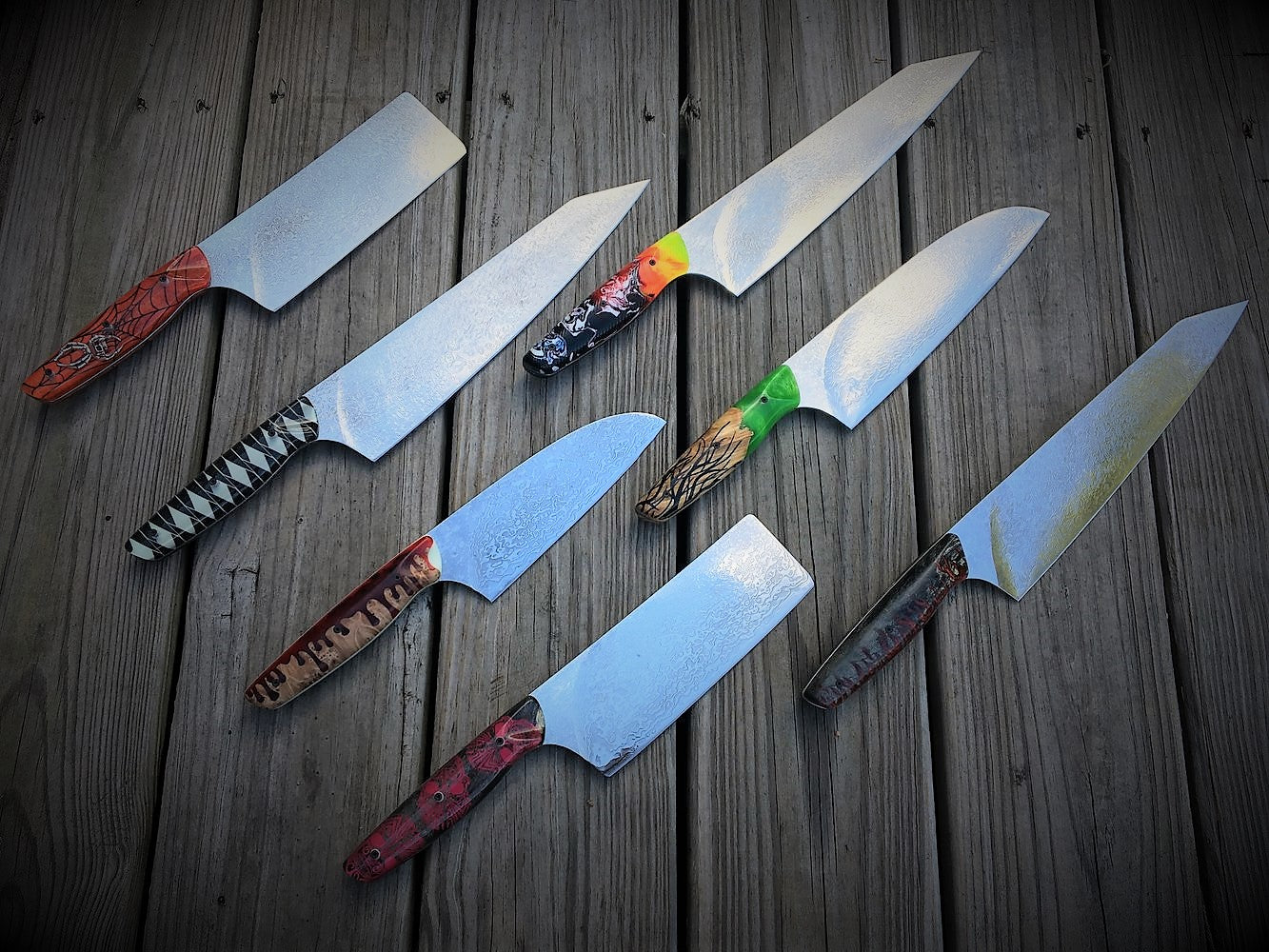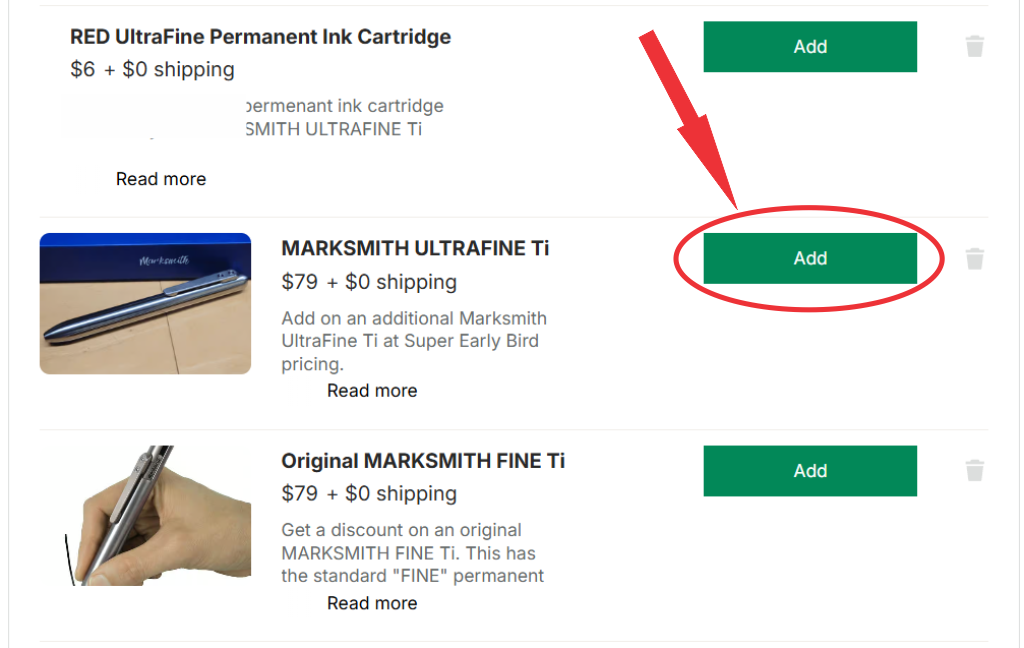The original finish for the Marksmith Ti Permanent Marker was a brushed finish. The markers are spun on a lathe, and an abrasive non-woven mesh pad like Scotch-bright is used to create the brushed finish. This finish looks amazing when new. Unfortunately, although titanium has a great strength to weight ratio, it is a relatively soft metal, even in its GR5 alloy form, and therefore it scratches easily. The brushed finish can therefore get scratched in use. It is easily refinished using a Scotch-Bright pad.
There's a good reason that stonewashed finish is the most popular titanium finish. Stonewashing covers the surface in randomized small scratches, such that new scratches from use will blend in.
I've investigated many other finishes for natural titanium and titanium coatings.
-
Polished - A lot of work to achieve, and gets scratched very easy.
-
Brushed - Relatively easy to apply and refinish using an abrasive Scotch-Bright pad, but also scratches easily
-
Bead Blasted - Great looking matte finish when new, but scratches easily creating shiny spots
-
PVD Coatings - Many different colors are available. Works best on polished or satin surfaces. Still wears off and scratches, because the base titanium GR5 metal is relatively soft. PVD coating is hard and wear resistant, but works best on hard metals, like hardened steel and carbide.
-
DLC Coating - Diamond Like Carbon, which is applied using the PVD process. It's the hardest of the PVD family of coatings, but has the same wear issues as PVD due to the relatively low hardness of the base titanium material. Like PVD, the finish is more durable on a smoother surface, like polished or brushed, and less durable on a matte surface, like bead blasted. Vapor polishing is recommended for a matte DLC coating finish. Vapor polishing has a lower surface roughness than bead blasting.
-
Electroplating - I tested this in black. Looks great at first, but quickly becomes a worn looking black finish on titanium.
-
Electro anodizing - Easy to apply with the right setup. Lots of color and creative possibilities. Not a durable finish, scratches and wears off easily since it is just the surface oxides, which are even softer than the base metal. Electro anodizing aluminum builds up a thick layer of aluminum oxide on the surface, which is a very hard material, and creates a wear and scratch resistant finish on aluminum. Unfortunately, electro anodizing titanium creates a thin layer of titanium dioxide, which is a very soft compound and offers no scratch or wear resistance. It only offers excellent corrosion resistance.
- Flame anodizing - Colorful results. Doesn't improve scratch resistance.
I wanted to try stonewashing the titanium Marksmith marker bodies and clips, but couldn't get a clear answer on what media to use. Not many people sharing the secret sauce of how to stonewash titanium or other metals. The general recommendation is to use a ceramic media that is about 400 grit.
At first I tried literal stones, specifically some pea gravel. Although this did a great job stonewashing the markers, the smaller stones got jammed into every space they could get into impossibly hard. I had to chisel the stones out with a hammer, breaking some of them apart. So we made some inserts to prevent the stones from jamming into small places.
This is how we stonewashed the Marksmith using stones.
The biggest issue with using stones in the tumbler is that it makes a terrible mess. The stones break down quickly and get smaller. They also make a lot of mud. It was not a good experience, and we quickly stopped doing it and started looking for a ceramic media.
I spoke with massfin.com and their recommendation was the following media for use in a vibratory tub tumbler. It works great to give a consistent stonewashed finish. It doesn't wear quickly, and the same water can be used for a long time.











Leave a comment (all fields required)